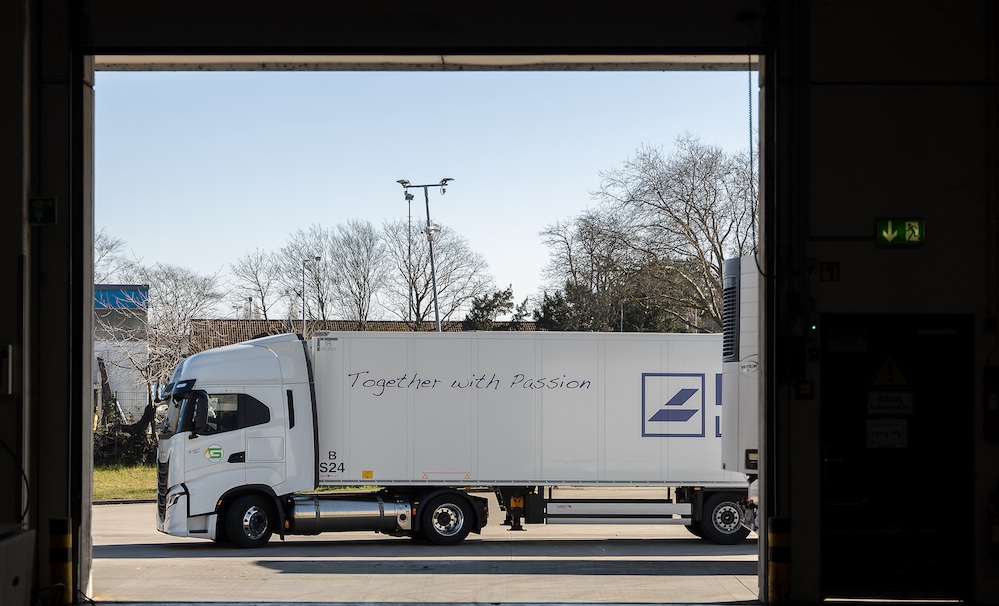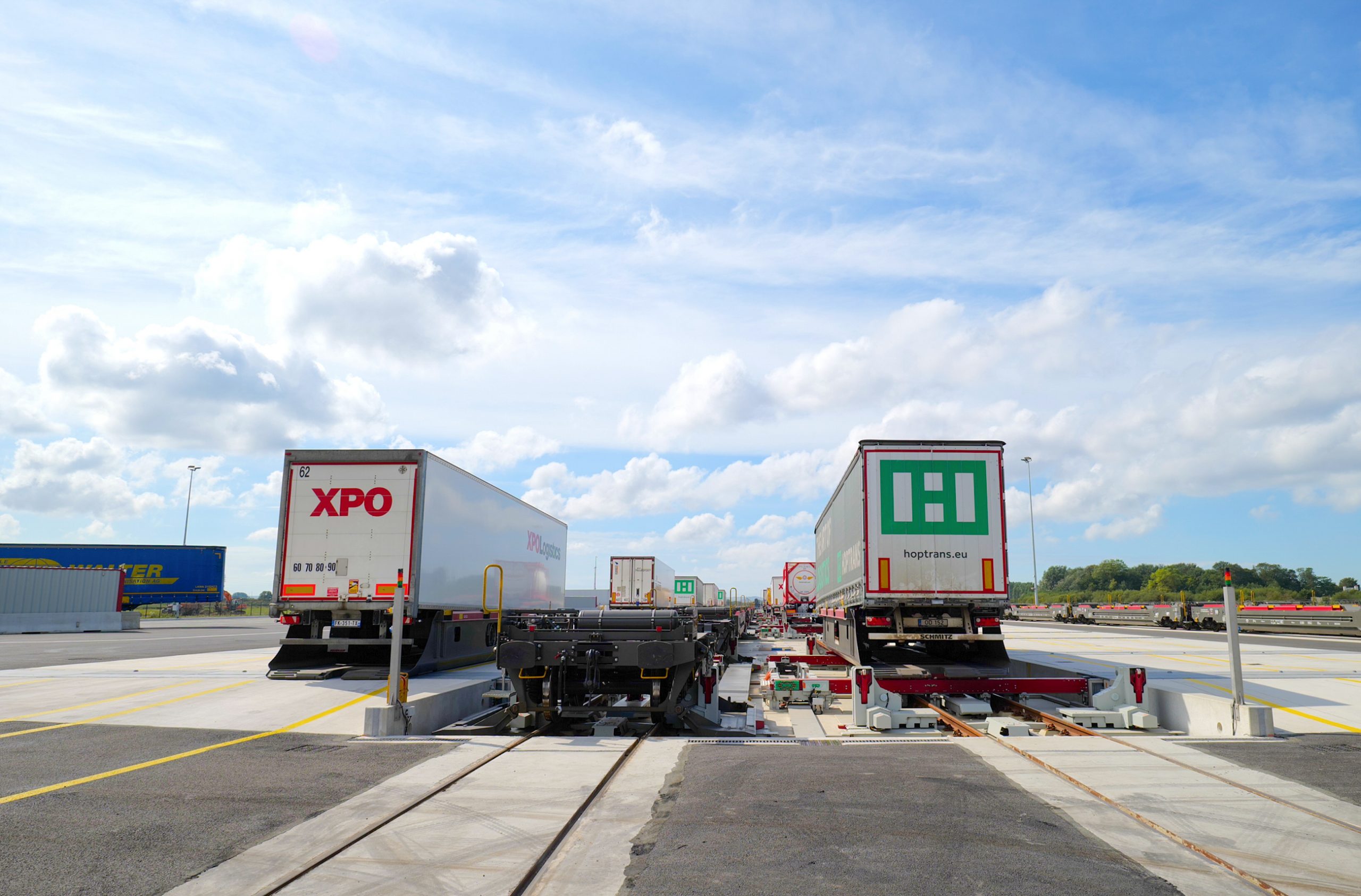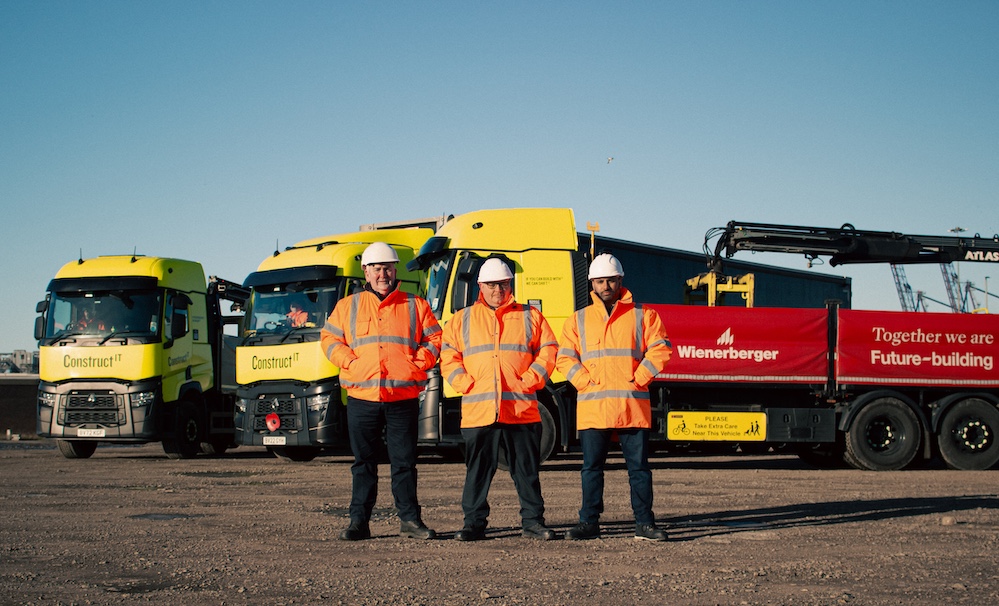HS2 has begun foundation work for a new bridge that will take the high-speed line under a major A road on the outskirts of Lichfield, Staffordshire.
An expert team of engineers has started work directly underneath the A38 carriageway at Streethay to create the foundations of the Rykneld Street bridge, which are between 20 and 27 metres deep. The complex process involves sinking a total of 88 piles – a series of concrete pillars built underground to support the weight of the structure.
In preparation for the start of piling, HS2, its construction partner for the West Midlands, Balfour Beatty VINCI (BBV), and National Highways have successfully built a temporary 320-metre stretch of the A38, which is now in operation. Once piling has been completed and the bridge deck is installed in late 2025, the realigned section of the road will be moved back to its original position where piling is now taking place – allowing space for the high-speed railway to pass underneath.
At 90.5 metres in length, HS2’s Rykneld Street bridge is the last of three retaining structures to be built at Streethay and contained within a 455-metre-long cutting through the ground. The trio of bridges, which also includes the A38 Southbound Slip Overbridge and the Streethay Overbridge, will enable the HS2 line to pass under the A38, its slip lanes and the existing South Staffordshire freight railway.
Around 750,000 cubic metres of earth will be excavated during the process of building the three bridges and reused to form embankments along the HS2 route locally.
David Perry, Senior Project Manager for HS2 Ltd, said:
“Carrying out a complex engineering operation of this scale in close proximity to a live carriageway comes with a unique set of challenges, requiring a multi-stage and collaborative approach from everyone involved.
“Our thanks go to National Highways, BBV and our wider supply chain as we start this next phase of construction at Streethay and, importantly, to our dedicated site team charged with safely delivering the Rykneld Street structure.”
A series of phased traffic management measures will continue during the build process and road realignment phase, with HS2 and National Highways working together to keep traffic flowing and to minimise disruption for road users.
David Patmore, Network Planner for National Highways, said:
“It is crucial for us that we keep traffic flowing and we do all we can to ensure people’s journeys on our roads are as smooth as possible. But complex operations such as this will inevitably cause some disruption. We have worked very hard and closely with HS2 and their partners to minimise that disruption.
“We will continue to do all we can to ease the impact of the works and would like to thank road users and local communities for their patience.”
The piling operation and ongoing engineering work is being carried out by BBV together with SB3 – a joint venture made up of Bachy Soletanche and Balfour Beatty Ground Engineering.
Zachary Walker, Project Manager for Balfour Beatty VINCI, added:
“We’re delivering a series of complex structures that will allow HS2 to pass underneath the A38, its slip lanes and the South Staffordshire freight railway near Lichfield.
“This exciting engineering project is about to move onto the next phase, as we begin the foundation work on the third and final bridge we’re building along this 455-metre retained cutting in Streethay.”
The new bridge was designed by a design joint venture of Mott MacDonald and SYSTRA working for BBV.
Hitesh Mistry, Engineering Manager for Mott MacDonald SYSTRA Design Joint Venture, said:
“It’s brilliant to see the final piece in the Streethay jigsaw come into reality. The trio of bridges has complex interfaces, but with close collaboration between designer, contractor, HS2, and stakeholders like National Highways, we’ve been able to collectively overcome the different challenges.”
Construction of HS2 continues at pace between the West Midlands and London, with the programme now supporting more than 31,000 jobs. When complete, HS2 services will run between London and the West Midlands on a dedicated high-speed line before reaching destinations further north via the existing West Coast Main Line.
In recent weeks, HS2 construction progress in the West Midlands has seen Interchange Station in Solihull take a step forward, after a 20-strong team carefully lifted 15 colossal bridge beams into position. Work has also started on the 2,000 underground foundation columns that will support the flagship Birmingham Curzon Street Station.









This had been going for months. Total waste of time and money for the tax payer.